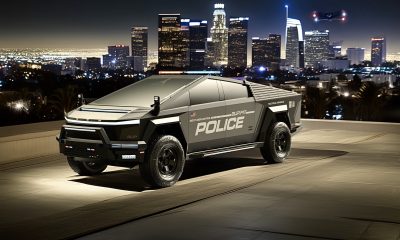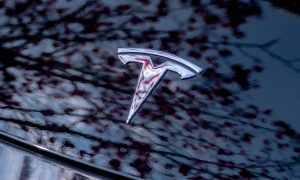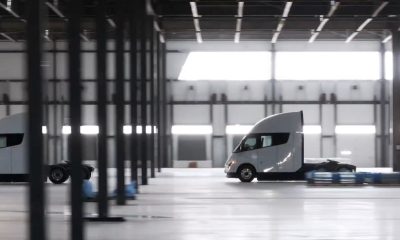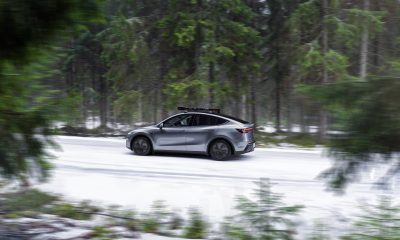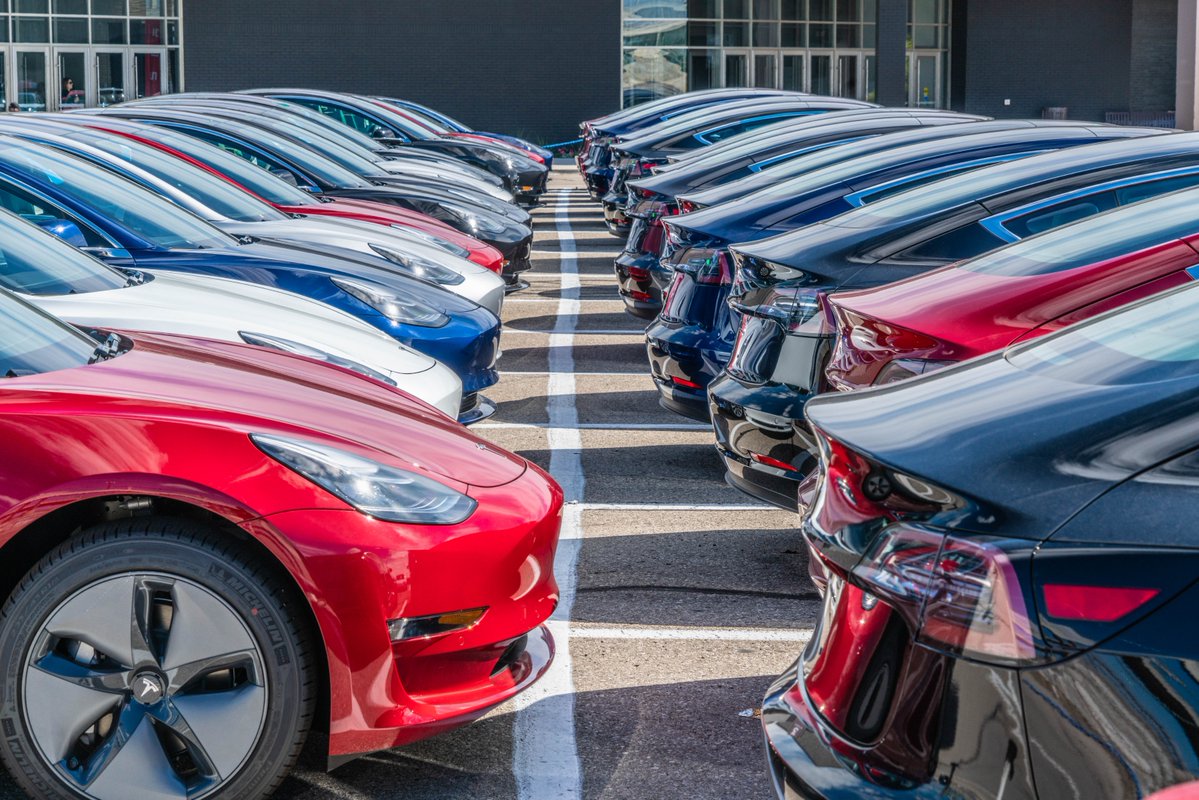

Investor's Corner
Concerns about Tesla’s (TSLA) alleged ‘demand problem’ are likely overblown
The past few months have not been kind to Tesla stock (NASDAQ:TSLA). Following the company’s lower-than-expected production and delivery figures from the first quarter, the negative narrative surrounding Tesla has gone on overdrive. At the forefront of this is a thesis that the electric car maker’s critics have been pushing: Tesla has a demand problem.
This particular point has spread like wildfire, particularly over the past few weeks. Analysts that recently downgraded TSLA stock would reference weak demand for the Model 3, and bears would echo the same assumption during segments in mainstream media. While this narrative is compelling in the way that it appears to be a foreshadowing of Tesla’s eventual demise, the demand problem thesis is at best inaccurate and at worst flat-out wrong, simply because one can’t base a thesis in one data point.
TSLA investor @Incentives101, an economist with a background in macro research, notes that there is a considerable misconception surrounding Tesla’s Q1 results and how it relates to the demand for the company’s electric cars. In a conversation with Teslarati, the investor explained that while it is easy to make assumptions based on Tesla’s Q1 2019 figures, there is simply not enough data to accurately and responsibly forecast Model 3 (and in extension, Model S and X) demand. Tesla’s Q1 2019 data is nevertheless useful, as it reveals a series of factors that could shed light on what is happening to the electric car maker.

Shocks, Backlogs, and Demand
The economist notes that demand shocks could be transitory or permanent. Taxes, for example, normally have a permanent effect and natural disasters have a transitory one. But these shocks have different effects over time depending on whether a shock is sudden or expected. Understanding how demand normally reacts to these shocks is very important, as it provides clues at what could be expected to make informed assumptions about Q1. When a shock such as a federal tax credit reduction comes, for example, its effect happens in three stages — given that consumers knew it was coming. Before the shock hits, demand generally increases (pulling demand), followed by a period where demand decreases by more than what could be considered a new equilibrium. Following these is another period where demand increases to reach a new equilibrium. Q1 most likely was the worst part of the second stage.
The backlog of Model 3 reservations was primarily used as a point against Tesla by critics, with an assumption suggesting that there will be no demand for the vehicle after the company clears out its initial batch of reservations. The economist argued that while Tesla’s backlog is widely believed to be a factor impacting demand, such a factor would likely not be relevant in the bigger picture. “Given the characteristics of auto demand (it recycles constantly, consumers preferences are well understood, and trends are clear) a ‘backlog’ has the same effect as a natural disaster if you really want to compare it to something. If the backlog happens at the same time as a tax shock or other shocks, it just exacerbates the move. The duration of the shock could be discussed, but in the end, the effect of the backlog is just irrelevant,” the investor said.
Tesla faced a number of shocks in the US auto market in recent months, and these could be translated into inaccurate assumptions. Among these are negative shocks such as the reduced federal tax credit, the “end” of the Model 3 reservation backlog, seasonality, and supply; as well as positive shocks like price reductions on the company’s vehicle lineup.
“There are some main conclusions that one can infer from the data: 1) There isn’t information available to know what the initial equilibrium was. The exponential shape of the curve gives no reference whatsoever to know this. Comparing Model S/X vs. Model 3, is easy to see that S/X had a stable path which would make it easier to measure the impact of these type of shocks; 2) Over time, the shock will be (almost) totally explained by the reduction in supply; 3) Shocks were expected, and price adjustments should more than cancel any negative permanent shock that taxes would have; and 4) Tesla had really bad luck with all these things happening at the same time,” the economist remarked.

Consumer Preferences
Based on these data, one can infer that the primary constraint that Tesla is facing is not demand, but supply. Demand for the company’s vehicles is not exclusive to the United States auto market. It is global, and in this sense, there is simply no indication that global supply for Tesla’s electric cars is already meeting global demand. The investor noted that the effect of the “backlog” argument in global markets would likely be marginal and transitory, and just as demand is not static, supply and prices have not been either.
Ultimately, the most significant factor that would affect the demand for Tesla’s vehicles is consumer preferences. In recent years, consumer preferences are changing in favor of smart devices, and this cascades into the auto industry. Tesla’s electric cars, which are arguably the most tech-focused consumer vehicles on the road today, are a perfect fit for this changing landscape.
According to the economist, “Consumer preferences and regulation actually affect demand. Prices technically don’t affect demand — just the quantity demanded — and the trend shows that it will have a multiplier effect. It’s always important to ask the correct questions, and the question today is not what are they doing to ‘fix’ a transitory shock? Or where’s demand? The question is, how will you increase supply?”
Alleged ‘Cannibalization’ of the Model S and X by the Model 3
In terms of the alleged cannibalization of Model S and X sales by the Model 3, the investor notes that there is no reason, at least at present, to believe that cannibalization is actually happening. Tesla Model 3 sales increased while Model S and X remained in their path, and as sales of the flagship sedan and SUV decreased, Model 3 sales in the US decreased as well.
“Even if you disaggregate data to try to find signs of cannibalization, there’s still no proof. There’s only one market — Norway — that is big enough, that has reliable data and didn’t face any distortions (tax or subsidy), that could give us any insight about cannibalization. Without further information, it would seem that there was significant cannibalization. The only problem is that Tesla distorted the market by eliminating the most popular Model S and X variant (75kWh), which was, on average 70%+ of sales. It is simply impossible to know which effect (the Model 3’s introduction or the 75kWh variant’s elimination) had the biggest impact, or even measure them in any way. And even then, one market may not be enough to prove it,” the investor stated.
Ultimately, the continuing phase-out period of the federal tax credit in the US would likely affect Model S and X sales in the country. But similar to the Model 3, these effects will likely be transitory and not permanent, especially given that prices have changed accordingly, given that the vehicles have better value per dollar. As with the Model 3, the sharp decrease in Model S and X sales in Q1 2019 could be explained by supply changes in its totality. Thus, demand should return to its previous path after a short period of time.
Disclosure: I have no ownership in shares of TSLA and have no plans to initiate any positions within 72 hours.
Investor's Corner
Tesla could save $2.5B by replacing 10% of staff with Optimus: Morgan Stanley
Jonas assigned each robot a net present value (NPV) of $200,000.
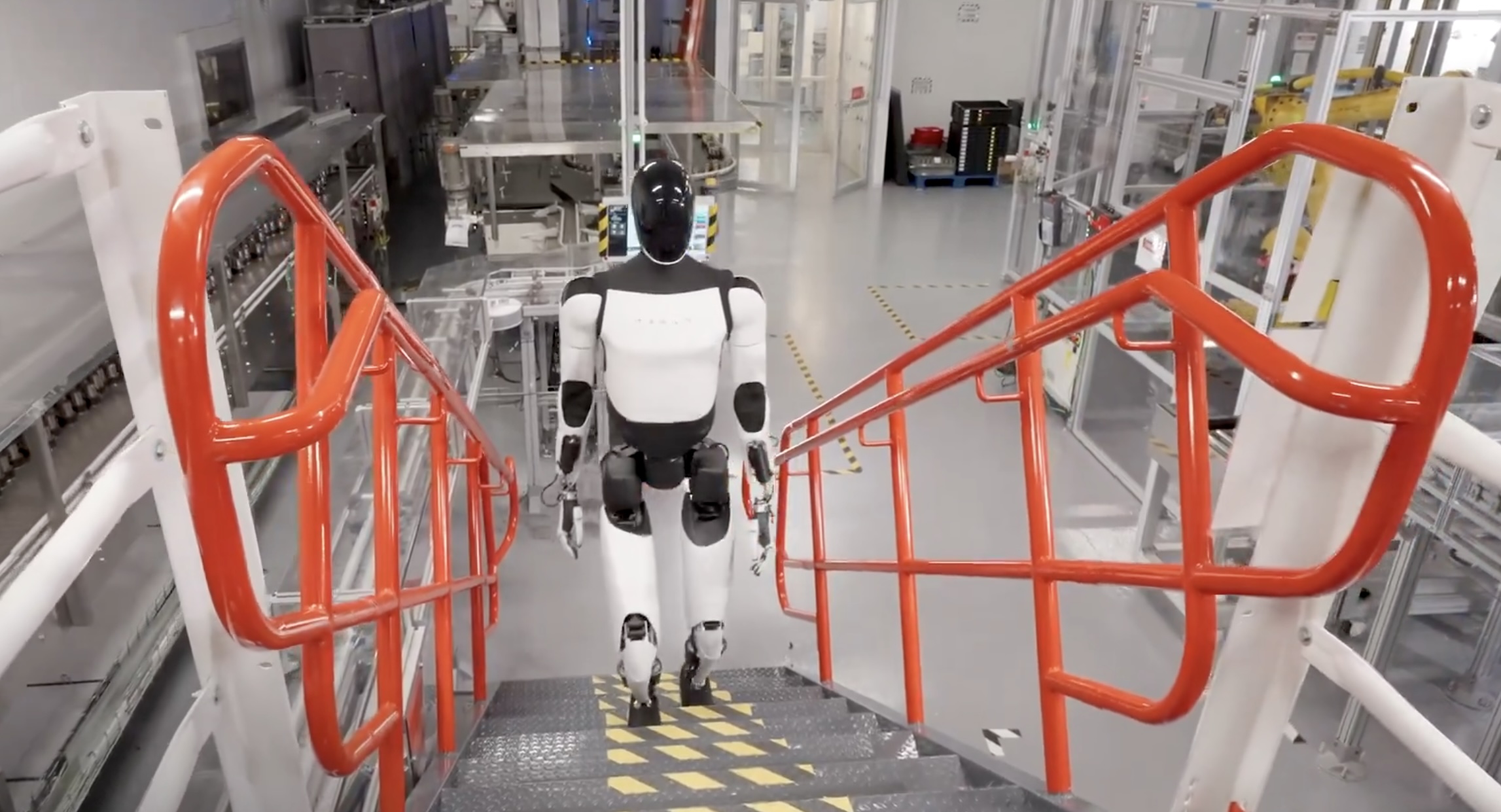
Tesla’s (NASDAQ:TSLA) near-term outlook may be clouded by political controversies and regulatory headwinds, but Morgan Stanley analyst Adam Jonas sees a glimmer of opportunity for the electric vehicle maker.
In a new note, the Morgan Stanley analyst estimated that Tesla could save $2.5 billion by replacing just 10% of its workforce with its Optimus robots, assigning each robot a net present value (NPV) of $200,000.
Morgan Stanley highlights Optimus’ savings potential
Jonas highlighted the potential savings on Tesla’s workforce of 125,665 employees in his note, suggesting that the utilization of Optimus robots could significantly reduce labor costs. The analyst’s note arrived shortly after Tesla reported Q2 2025 deliveries of 384,122 vehicles, which came close to Morgan Stanley’s estimate and slightly under the consensus of 385,086.
“Tesla has 125,665 employees worldwide (year-end 2024). On our calculations, a 10% substitution to humanoid at approximately ($200k NPV/humanoid) could be worth approximately $2.5bn,” Jonas wrote, as noted by Street Insider.
Jonas also issued some caution on Tesla Energy, whose battery storage deployments were flat year over year at 9.6 GWh. Morgan Stanley had expected Tesla Energy to post battery storage deployments of 14 GWh in the second quarter.
Musk’s political ambitions
The backdrop to Jonas’ note included Elon Musk’s involvement in U.S. politics. The Tesla CEO recently floated the idea of launching a new political party, following a poll on X that showed support for the idea. Though a widely circulated FEC filing was labeled false by Musk, the CEO does seem intent on establishing a third political party in the United States.
Jonas cautioned that Musk’s political efforts could divert attention and resources from Tesla’s core operations, adding near-term pressure on TSLA stock. “We believe investors should be prepared for further devotion of resources (financial, time/attention) in the direction of Mr. Musk’s political priorities which may add further near-term pressure to TSLA shares,” Jonas stated.
Investor's Corner
Two Tesla bulls share differing insights on Elon Musk, the Board, and politics
Two noted Tesla bulls have shared differing views on the recent activities of CEO Elon Musk and the company’s leadership.

Two noted Tesla (NASDAQ:TSLA) bulls have shared differing views on the recent activities of CEO Elon Musk and the company’s leadership.
While Wedbush analyst Dan Ives called on Tesla’s board to take concrete steps to ensure Musk remains focused on the EV maker, longtime Tesla supporter Cathie Wood of Ark Invest reaffirmed her confidence in the CEO and the company’s leadership.
Ives warns of distraction risk amid crucial growth phase
In a recent note, Ives stated that Tesla is at a critical point in its history, as the company is transitioning from an EV maker towards an entity that is more focused on autonomous driving and robotics. He then noted that the Board of Directors should “act now” and establish formal boundaries around Musk’s political activities, which could be a headwind on TSLA stock.
Ives laid out a three-point plan that he believes could ensure that the electric vehicle maker is led with proper leadership until the end of the decade. First off, the analyst noted that a new “incentive-driven pay package for Musk as CEO that increases his ownership of Tesla up to ~25% voting power” is necessary. He also stated that the Board should establish clear guidelines for how much time Musk must devote to Tesla operations in order to receive his compensation, and a dedicated oversight committee must be formed to monitor the CEO’s political activities.
Ives, however, highlighted that Tesla should move forward with Musk at its helm. “We urge the Board to act now and move the Tesla story forward with Musk as CEO,” he wrote, reiterating its Outperform rating on Tesla stock and $500 per share price target.
Tesla CEO Elon Musk has responded to Ives’ suggestions with a brief comment on X. “Shut up, Dan,” Musk wrote.
Cathie Wood reiterates trust in Musk and Tesla board
Meanwhile, Ark Investment Management founder Cathie Wood expressed little concern over Musk’s latest controversies. In an interview with Bloomberg Television, Wood said, “We do trust the board and the board’s instincts here and we stay out of politics.” She also noted that Ark has navigated Musk-related headlines since it first invested in Tesla.
Wood also pointed to Musk’s recent move to oversee Tesla’s sales operations in the U.S. and Europe as evidence of his renewed focus in the electric vehicle maker. “When he puts his mind on something, he usually gets the job done,” she said. “So I think he’s much less distracted now than he was, let’s say, in the White House 24/7,” she said.
TSLA stock is down roughly 25% year-to-date but has gained about 19% over the past 12 months, as noted in a StocksTwits report.
Investor's Corner
Cantor Fitzgerald maintains Tesla (TSLA) ‘Overweight’ rating amid Q2 2025 deliveries
Cantor Fitzgerald is holding firm on its bullish stance for the electric vehicle maker.
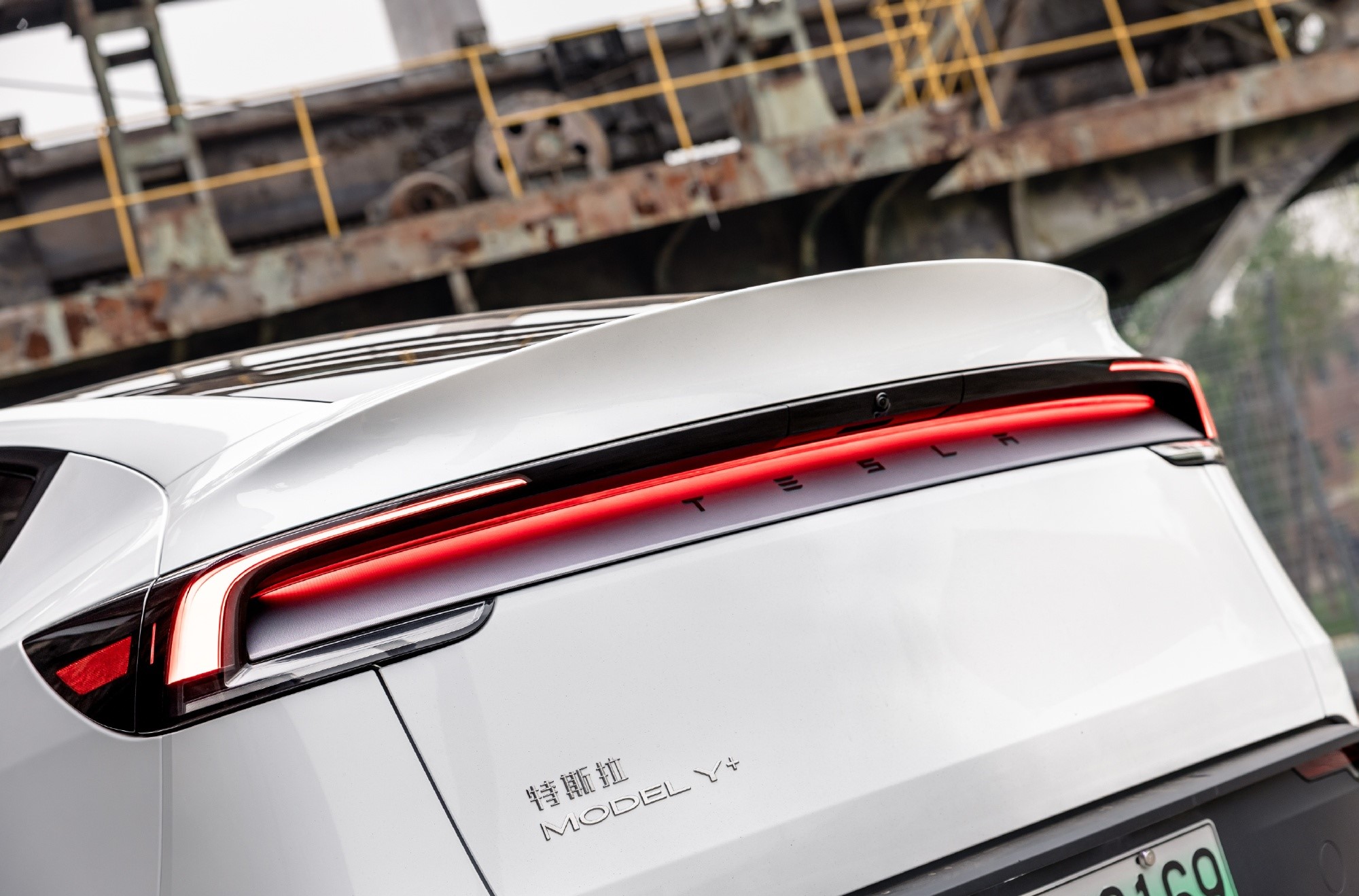
Cantor Fitzgerald is holding firm on its bullish stance for Tesla (NASDAQ: TSLA), reiterating its “Overweight” rating and $355 price target amidst the company’s release of its Q2 2025 vehicle delivery and production report.
Tesla delivered 384,122 vehicles in Q2 2025, falling below last year’s Q2 figure of 443,956 units. Despite softer demand in some countries in Europe and ongoing controversies surrounding CEO Elon Musk, the firm maintained its view that Tesla is a long-term growth story in the EV sector.
Tesla’s Q2 results
Among the 384,122 vehicles that Tesla delivered in the second quarter, 373,728 were Model 3 and Model Y. The remaining 10,394 units were attributed to the Model S, Model X, and Cybertruck. Production was largely flat year-over-year at 410,244 units.
In the energy division, Tesla deployed 9.6 GWh of energy storage in Q2, which was above last year’s 9.4 GWh. Overall, Tesla continues to hold a strong position with $95.7 billion in trailing twelve-month revenue and a 17.7% gross margin, as noted in a report from Investing.com.
Tesla’s stock is still volatile
Tesla’s market cap fell to $941 billion on Monday amid volatility that was likely caused in no small part by CEO Elon Musk’s political posts on X over the weekend. Musk has announced that he is forming the America Party to serve as a third option for voters in the United States, a decision that has earned the ire of U.S. President Donald Trump.
Despite Musk’s controversial nature, some analysts remain bullish on TSLA stock. Apart from Cantor Fitzgerald, Canaccord Genuity also reiterated its “Buy” rating on Tesla shares, with the firm highlighting the company’s positive Q2 vehicle deliveries, which exceeded its expectations by 24,000 units. Cannacord also noted that Tesla remains strong in several markets despite its year-over-year decline in deliveries.
-

 Elon Musk2 weeks ago
Elon Musk2 weeks agoTesla investors will be shocked by Jim Cramer’s latest assessment
-

 Elon Musk3 days ago
Elon Musk3 days agoxAI launches Grok 4 with new $300/month SuperGrok Heavy subscription
-

 Elon Musk5 days ago
Elon Musk5 days agoElon Musk confirms Grok 4 launch on July 9 with livestream event
-

 News1 week ago
News1 week agoTesla Model 3 ranks as the safest new car in Europe for 2025, per Euro NCAP tests
-

 Elon Musk1 week ago
Elon Musk1 week agoxAI’s Memphis data center receives air permit despite community criticism
-

 News2 weeks ago
News2 weeks agoXiaomi CEO congratulates Tesla on first FSD delivery: “We have to continue learning!”
-

 Elon Musk2 weeks ago
Elon Musk2 weeks agoTesla scrambles after Musk sidekick exit, CEO takes over sales
-

 News2 weeks ago
News2 weeks agoTesla sees explosive sales growth in UK, Spain, and Netherlands in June


